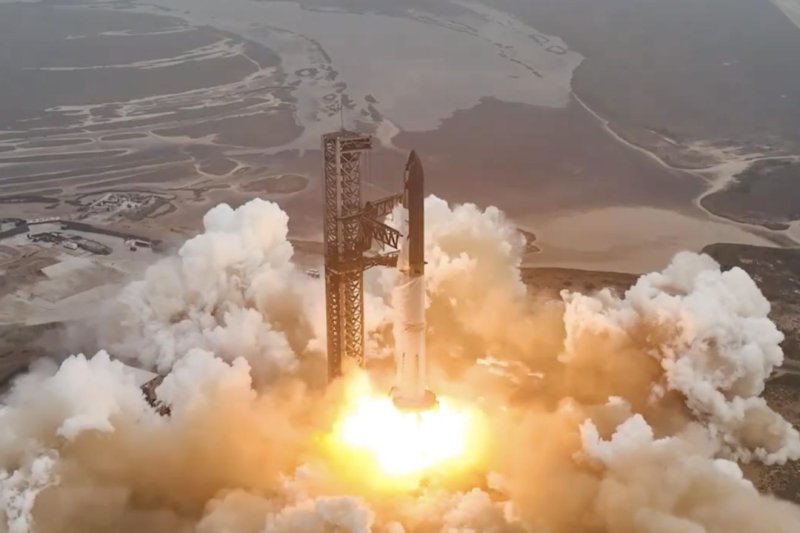SpaceX’s Starship rocket has achieved a significant milestone by completing its inaugural full flight, marking a breakthrough for the prototype system intended for potential Mars missions.
Previously, the rocket, towering nearly 121 meters (400 feet) tall, faced setbacks with three missions resulting in explosions or disintegration. However, this time, Starship survived re-entry, executing a controlled descent into the Indian Ocean just 65 minutes post-launch from Texas, USA.
Elon Musk, CEO of SpaceX, shared on his social media platform, X, that despite losing numerous tiles and sustaining flap damage, Starship managed a soft ocean landing. He hailed the event as a pivotal moment for the future of space exploration.
Departing from Starbase in Boca Chica, Texas, at 7:50 am (12:50 GMT), Starship ascended into space, traversing halfway around the globe. Reaching an altitude of nearly 211 kilometers (130 miles) and exceeding speeds of 26,000 km/h (16,000 mph), it commenced its descent. Live coverage captured parts of the spacecraft detaching due to the intense re-entry heat, with flying debris even damaging the camera lens.
Despite these challenges, the spacecraft maintained enough integrity to relay data to its intended splashdown location in the Indian Ocean.
This mission success is pivotal in SpaceX’s quest to develop a reusable rocket crucial for NASA’s lunar and Martian ambitions. NASA, which has contracted a modified version of Starship for its Artemis program, views this as a significant step toward lunar exploration and eventual Mars missions.
NASA Chief Bill Nelson congratulated SpaceX on the successful test flight, emphasizing its importance in advancing humanity’s space exploration endeavors.
SpaceX’s approach prioritizes real-world testing over lab simulations. The next hurdle is the development of a fully reusable orbital heat shield, with Musk committing to further tests in the pursuit of a reusable satellite launcher and moon lander.
The stakes are high for SpaceX, as NASA aims to utilize Starship for a manned lunar return by 2026, competing with China’s ambitions to send astronauts to the moon by 2030. China has made notable strides in its lunar program, including a recent successful sample retrieval mission on the moon’s far side.
Despite initial setbacks, including explosions during the April 2023 and November 2023 launches, and a breakup during atmospheric re-entry in March 2024, Starship’s latest accomplishment signals progress toward realizing ambitious space exploration goals.










